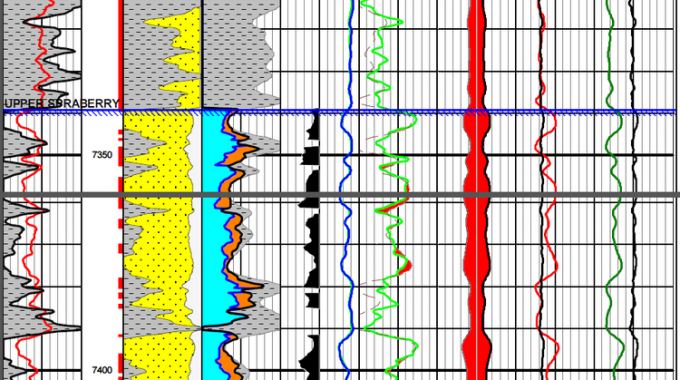
The Rigzone Interview: TPH Chief Tudor Says Oil Price Already Hit Floor
An ongoing downturn in oil prices has reshaped many businesses. At Tudor Pickering Holt & Co. (TPH), it’s meant less transactions work and more engagement to help companies shore up their balance sheets and plan for the future. And although the downturn has been painful for many in the field, Tudor maintains that the energy industry is still a good space for new college graduates.
Founder and CEO Bobby Tudor runs the premier oil and gas investment banks in Houston. With office throughout the U.S. and Canada, TPH has more than $1.5 billion in assets under management specifically in the energy space.
Days into a price rebound that showed oil selling at slightly more than $40 per barrel, Tudor talked with Rigzone about the business’ cycles and how the energy industry will likely emerge from the downturn.
Rigzone: What’s your take on the production freeze discussions between the Organization of the Petroleum Exporting Countries (OPEC) and Russia? Is there a real intent to hold production at January levels, or is it just lip service?
Tudor: I think it’s mostly lip service. Primarily because production there (with the exception of) Iran, is mostly frozen now. It’s not going up. I think it’s really meant to signal to the broader market that they’re not going to do anything different from what they’re doing right now. The balancing factor continues to be what happens in North America.
The market is not going to get balanced based on what happens at OPEC at this point because they basically are flat, they’re just not decreasing. To balance the market, there actually has to be a decrease, and the decrease is going to have to come from the United States.
Rigzone: If prices do go up, wouldn’t the effect on prices be minimized when U.S. producers turned the spigot back on?
Tudor: There are a lot of drilled but uncompleted wells, (but) the spigot cannot be turned on immediately. I do think, though, given what’s happened to cost, producers can hedge their 2017 production at $45. For example, they would do that and do it aggressively and would produce more at those levels. It’s all driven ultimately by what price can you hedge, and I think at $45, there would be a lot of hedging and more production.
That being said, the ultimate question is what price is required for the United States to keep production flat. We don’t think the United States could keep production flat in the $40s. We think it’s going to have to be $50 or more for it to keep production flat.
Rigzone: Let’s talk a little about the businesses themselves. The spring borrowing base redetermination, in which banks re-evaluate corporate debt, is upon us. What do you expect to happen to that source of financing?
Tudor: We’re expecting average redeterminations to be down 25 to 30 percent, and if that’s an average number, then that means there are some that are down 50 percent. But there will be some that are basically flat. That’s a very different thing from what we saw in the fall, when redeterminations were down 8 to 10 percent on average. We are expecting pretty dramatically higher levels of downward redeterminations.
Rigzone: So this is the moment the finance executives have been dreading as the downturn has dragged on for more than a year?
Tudor: I think time is not your friend when you continue to have soft commodity prices. The banks have been, frankly, bending over backwards to work with people. But at some point, if you still have an oil price in the $30s and the banks have regulators breathing down their necks and reserves for so many of these companies are fundamentally uneconomic in the $30s … the banks have no choice but to take down the bases, and that’s what they’re doing.
Rigzone: What do you suppose this means for reserve-based lending going forward?
Tudor: I don’t think reserve-based lending goes away. Typically, it’s been the very best place to be in the whole capital structure if you’re a lender to the energy industry. But they have to be sensitive to price, and there’s just not that much in North America that is economic in the $30s. Costs are too high, and for you to book those reserves, you need higher commodity prices and that’s just not where we are at the moment. I don’t think reserve-based lending goes away at all. It’s just the amount that they can lend in a price environment like this has gone down. There’s nothing magic to that.
Rigzone: What will be the enduring impact of this downturn?
Tudor: I think people will definitely be a lot more cautious on the backend of this for a meaningful period of time – meaning I think CEOs and boards are going to be less inclined to lever back up. I think they’re going to be a little less inclined to outspend their cash flow. I think banks are going to be inclined to be less aggressive. I think it will be a while before the high yield market opens back up with these covenant-light deals we saw a lot of in 2013, 2014 and early 2015.
So on the whole, the industry is going to come out of this more cautious. That being said, capital markets have very short memory spans, and when people – people being investors – start making money again by participating in equity deals and high yield deals in the energy business, the markets will open back up. It always happens that way, and there’s no reason to believe it won’t happen that way again.
I do think that boards of directors for energy companies are going to be less comfortable in outspending their cash flow dramatically, assuming capital markets are going to be there for them. We had a period of time when the markets just weren’t there; there’s also basically been no (acquisitions and divestitures) market to help you fund things. When you have a near death experience, it tends to impact you. We think there will be more caution on the back end of this, and frankly, that’s good for the oil price, just because it means we’re not going to see this immediate hard-snap back to dramatic year-over-year growth in North America.
Rigzone: Do you expect oil prices to dip any further?
Tudor: We think we probably have seen the bottom. But inventories are still very heavy. I think a lot depends on what happens with inventories in the next month or two – do we see continued drawdowns and returns to more normalized levels? We think you will, but we could be wrong. It’s a little hard to predict.
Rigzone: At what point will transactions activity pick up in the market?
Tudor: We’ve been saying that to have a functioning asset market in the United States, we need propped oil prices at $40 and above. And prices five years out, in and around $50, and we’re just not there yet. The problem has been to date if you were selling assets at the current strip with the [prop month] being in and around $30, and a five year number in and around $40, it actually really didn’t help you all that much. And so, you just didn’t have buyers who were willing to look at that strip price and say well, even though the five year strip says $40, I’m willing to use a longer term price of $50. Buyers were just not in that mood. So we’ve just needed an uplift in that forward curve to have a functioning A&D market and we’re not there quite yet, but directionally, we’re going in the right way and it feels a bit better.
Rigzone: How has downturn impacted what you do at TPH?
Tudor: It has slowed the overall (mergers and acquisitions) market pretty dramatically. If you look at overall M&A volumes in the last year, and in particular in the last three to six months, they’ve been down very dramatically from … the five or seven year average, so we’ve spent more time on restructurings, and more time helping companies think through balance sheet issues and planning for the future. It has slowed transaction activity a lot in the upstream and in oilfield services. The healthiest market generally has been in the midstream space, where those assets have generally continued to trade at high valuations. There hasn’t been a ton of them on the market, but the ones that have been on the market have generally traded pretty well.
Rigzone: How would you advise a recent graduate interested in working in the oil and gas industry?
Tudor: I think it’s a great place to be. You just have to recognize that it’s a cyclical industry and there are periods when supply and demand get out of balance and when that happens, the industry tends to shrink. But you know what? It happens to manufacturing, it happens to autos, it happens to technology – it’s not the only business that has cycles. It’s just that this particular cycle seems really harsh and painful, and it is. I’ve had a lot of people who have been running energy companies for 30 years saying this is as painful as they can remember, including back to the mid-80s. But the world will continue to need energy, and the United States will continue to be a very important supplier of that. Our degree of confidence in the industry is very high and that’s what I would tell a college senior.


